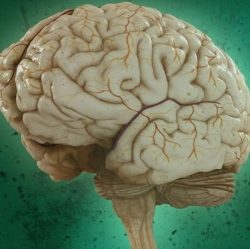
An interdisciplinary Stanford team has developed a new method for quantitatively (using numbers) measuring human brain tissue using MRI (which formerly provided mostly qualitative, such as “bright” or “dark,” information).
The team members measured the volume of large molecules (macromolecules) within each cubic millimeter of the brain. Their method may improve how doctors diagnose and treat neurological diseases such as multiple sclerosis.
“We’re moving from qualitative — saying something is off — to measuring how [far] off it is,” said Aviv Mezer, Stanford postdoctoral scholar in psychology. The team’s work, funded by research grants from the National Institutes of Health, appears in the journal Nature Medicine.
He found inspiration in seemingly unrelated basic research from the 1980s. In theory, he read, magnetic resonance could quantitatively discriminate between different types of tissues. But previous quantitative MRI measurements required uncomfortably long scan times. Mezer, whose background is in biophysics, and psychology Professor Brian Wandell unearthed a faster scanning technique, albeit one noted for its lack of consistency.
“Now we’ve found a way to make the fast method reliable,” Mezer said. Mezer and Wandell, working with neuroscientists, radiologists and chemical engineers, calibrated their method with a physical model — a radiological “phantom” — filled with agar gel and cholesterol to mimic brain tissue in MRI scans.
